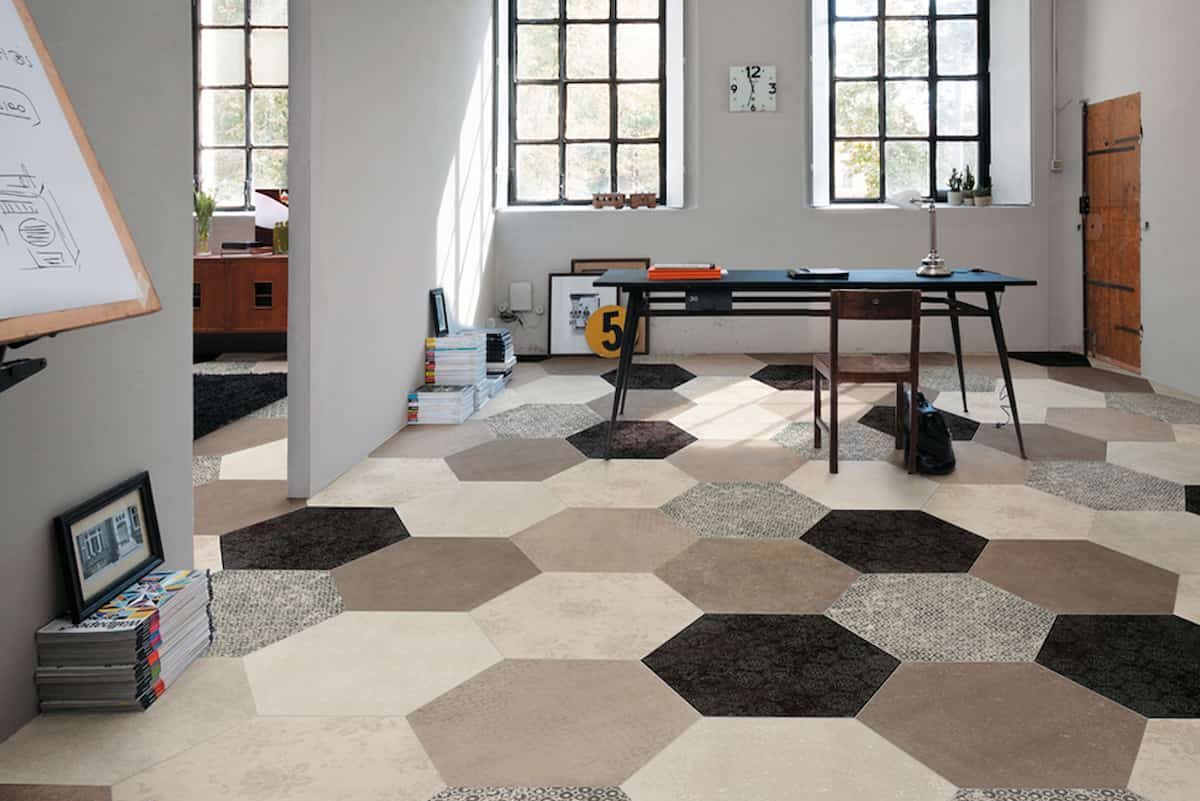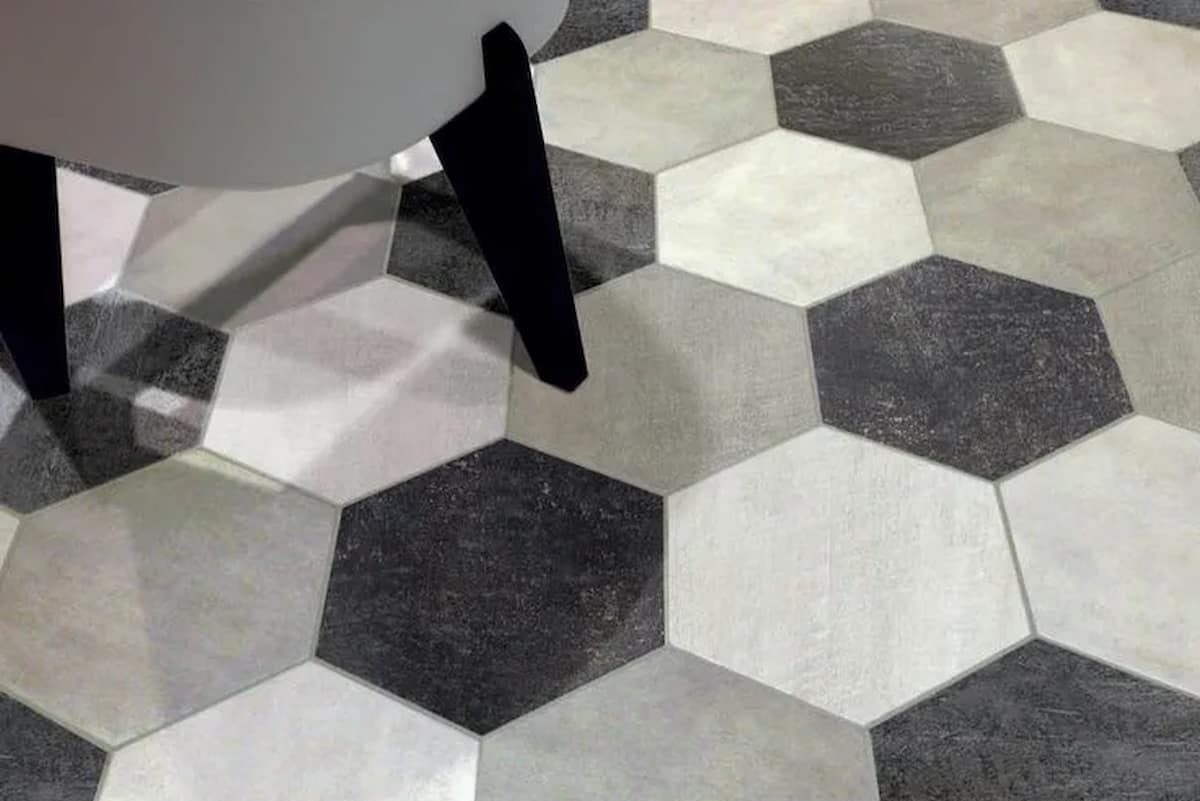Although a designer floor is inappropriate for a utility room, a floor covering is necessary to protect the subfloor and prevent the area from appearing like a garage. The flooring should be impermeable to liquids, scratch-resistant, and easy to maintain.
The two most commonly recommended flooring materials for utility rooms are ceramic tiles and vinyl; painting the subfloor is a third option.
If you want to spend time in the laundry room, you should treat it like any other room in your home. Rather than relegating the laundry room to a dreary corner of the basement, many people transform it into a “happy area” by decorating it in a unique and vibrant manner.
You may create your own geometric design with solid colors, or you can choose a tile with a pattern that stands out on its own.
Consider using wood-look tile if you like a quiet appearance. You may have the appearance of wood in planks, hexagons, and mosaics without having to worry about water damage. Even if we can’t make doing laundry your favorite part of the day, arranging your laundry room with the same care as you would any other room will make it a place you like being in.

Requirements for the Subfloor
It is conceivable that your utility room already has a floor covering, but unless it is vinyl, it will likely need to be removed before new flooring can be installed.
Frequently, old vinyl flooring is covered with 1/4-inch plywood, which provides a smooth, level surface for most floor coverings. When removing flooring, it is essential to remove the adhesive as well. The best way to achieve this is to sand the subfloor using a floor sander. The adhesion of ceramic tiles or vinyl flooring will be hindered by any leftover adhesive lumps.
Ceramic Tiles
Ceramic tiles provide a durable, scratch-resistant surface that prevents washing machine leaks from penetrating the flooring.
Keep in mind that tiling can be labor-intensive and that tiling elevates the floor level, which could pose problems with doorways or stairways. Instead of glazed tiles, choose unglazed materials like terra cotta or those with a textured surface to increase grip and decrease slips and falls. If you are ready to go through the trouble and expense of installing tiles, you may have a floor that resists stains and is simple to clean.
A vinyl floor
Both vinyl tiles and sheet flooring are less priced alternatives to ceramic tiles. Both items are easy to clean, waterproof, stain- and spill-resistant, and simple to install.
Consider vinyl plank flooring if you are interested in the benefits of a floating floor, which include glue-free installation and subfloor defect tolerance. Because there are no wood fibers in the planks, they have the same water and stain resistance as vinyl sheeting and vinyl tiles.
Considerations for Laundry Room Flooring
Moisture is the primary concern with laundry room floors. During catastrophic events, water can leak from a variety of sources, including an overflowing washing machine, a clogged drainpipe, or a shattered or severed water supply pipe.
Water is always present in restrooms; it cannot be avoided outside of extreme emergencies. Installing a floor covering that is as moisture-resistant as possible in the laundry room is advantageous for this reason.

Additionally, you need a floor covering that is aesthetically pleasing and pleasant to stand on for lengthy durations. The floor must be smooth and easy to maintain. It must be durable enough to endure for many years. Lastly, the pricing should be affordable and account for the potential of do-it-yourself flooring installation.
Ceramic tile surfaces
Ceramic and porcelain tile are conventional materials for laundry room flooring because they are durable, easy to maintain, and waterproof if correctly installed.
Tile can be difficult to stand on for lengthy amounts of time and is inherently cool, but radiant heating or the addition of cloth or gel mats can remedy these issues. Solvents are resistant to tile flooring. Bleach and gasoline will not cause damage to tile floors. As a result of the tiling, the washer and dryer have a solid, secure base.
The rigidity and lack of flexibility of tile flooring. When there are so many options available, such as ceramic, porcelain, marble, glass, and travertine, it may be difficult to select the appropriate tile material. In addition to its durability, man-made tiles such as porcelain and ceramic come in an almost unlimited array of styles.

Due to the variety of colors, shapes, and finishes available, there is always a suitable tile for your project. Stone tiling is also available in a broad variety of naturally occurring varieties, but they require distinct care procedures.
There is no single optimal tile for everyone; it all depends on the desired look. If your laundry room doubles as a mudroom, it may be a good idea to use nonslip flooring that does not reveal dirt to assist conceal issues. The backsplash in your laundry room is an ideal spot for embellishment. A bold and cheerful color, pattern, or design that is also durable and functional enlivens the room. Your options for laundry room wall tiles include blue, green, red, pink, silver, and even metallics
Ceramic Tile’s Advantages for utility Rooms
An astonishing list of advantages for ceramic tile includes:
- Given that laundry rooms commonly face liquid and water spills, water resistance is unquestionably the most important feature to consider. Soap splatters, drips from garments hung to dry, leaking washing machines, and splashes from the sink all cause harm to materials not designed for moist conditions. Ceramic tile, when installed correctly and according to the manufacturer’s recommendations, creates a waterproof surface.
- Slip resistance: Due to all of the liquid hazards that make water resistance vital for laundry room floors, slip resistance is a smart option. You may choose from a vast selection of slip-resistant ceramic tile options without sacrificing style.
- Unsanitary conditions in laundry rooms are caused by unclean socks in laundry baskets, dirty cleaning cloths, and other items. Ceramic tile maintains a hygienic environment by preventing the growth of mold, germs, and mildew. The ability to resist stains and scratches is especially important for laundry rooms that double as mudrooms, where muck and filth are frequently tracked in. Ceramic tile is resistant to ordinary wear and tear as well as the “load” of your washer and dryer.
- Additionally, it will not fade, scratch, scuff, or chip easily. The laundry room should make your life easier with a design that makes cleaning your clothing and linens easier – it should not be tough to clean. Fortunately, ceramic tile laundry rooms are simple to clean: The majority of the time, a simple water wipe will be enough. Fade resistance: your tile will not fade whether you use cleaners or disinfectants for stubborn stains or thorough cleaning. The color of ceramic tile is baked in permanently and will not fade.
- In addition, ceramic tile is available in an almost unlimited variety of pattern possibilities and may be used practically everywhere in a laundry room. Choose from an assortment of colors, patterns, sizes, shapes, and even textures.
Consumer Reports picked porcelain tile, a type of ceramic tile, as the best flooring option for laundry rooms (as well as bathrooms, kitchens, mudrooms, porches, and sunrooms!). different types of ceramic tiles for flooring are available in our company, contact us to receive the catalogs.












Your comment submitted.